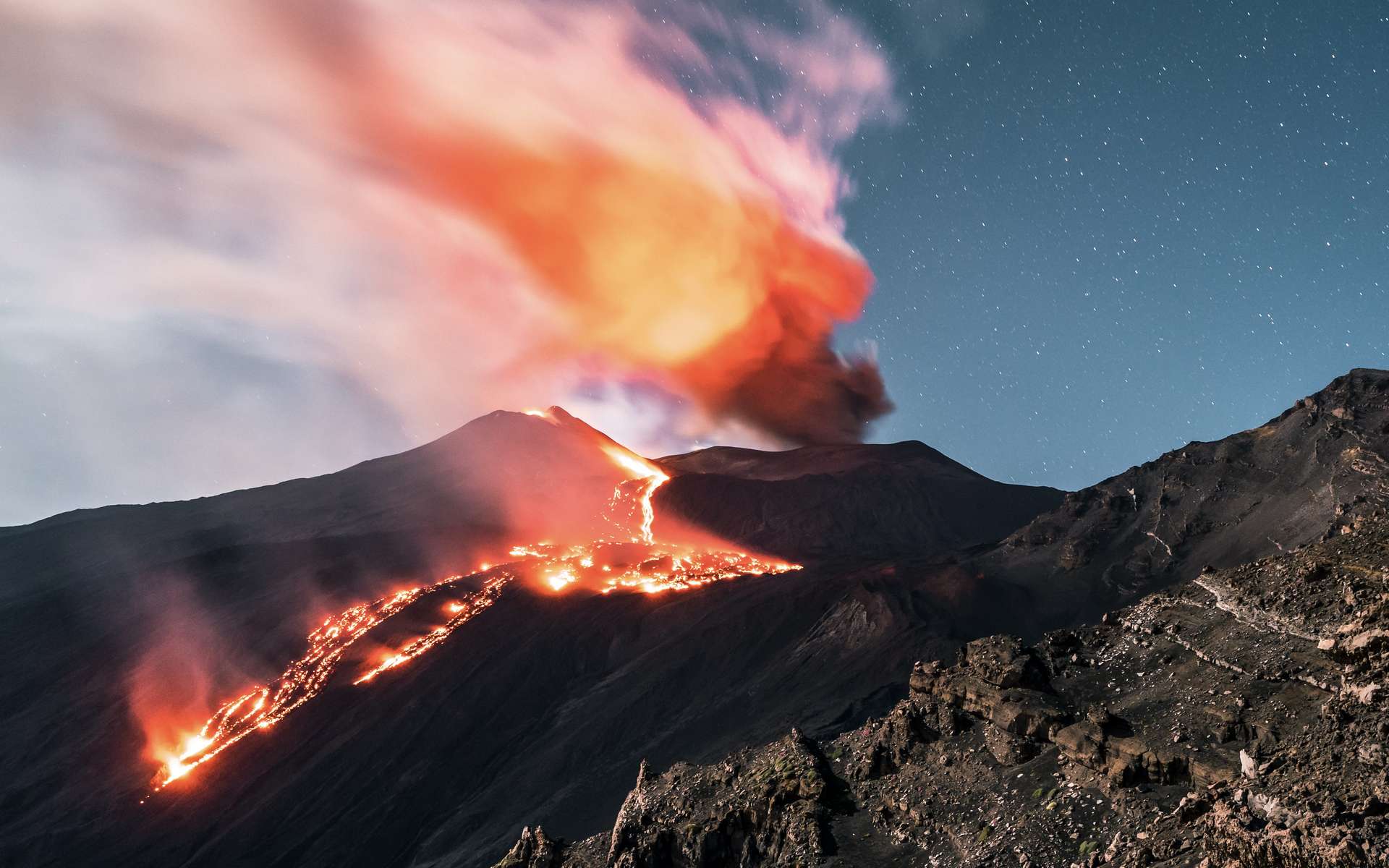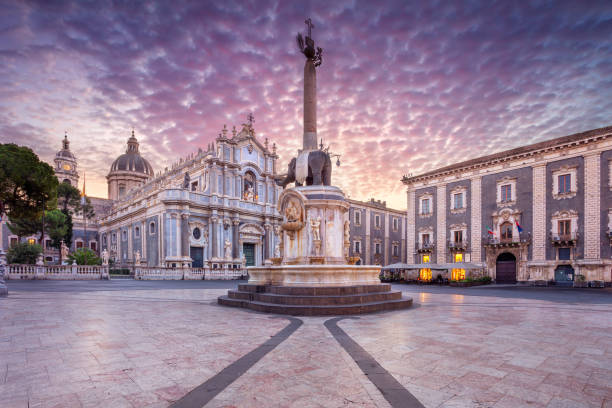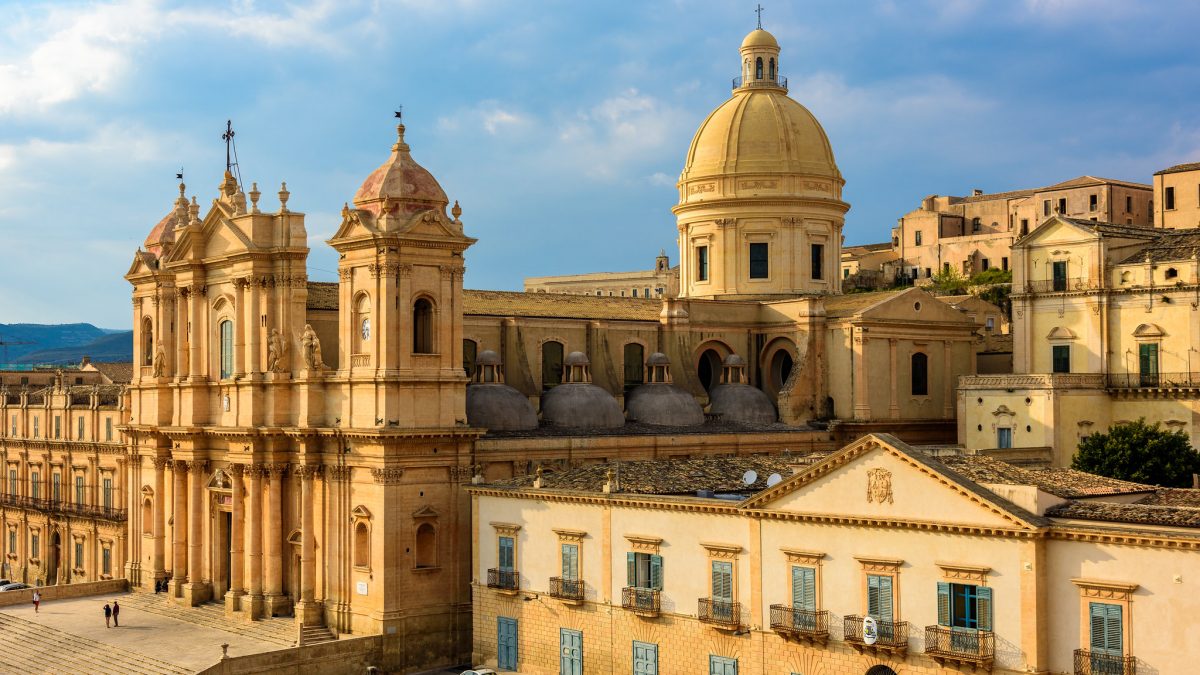FROM TAORMINA

1) ETNA AND CATANIA
7 hours , guide recommended
Etna is one of the most active and highest volcanoes in Europe, a UNESCO World Heritage Site since 2013 for its geological and cultural importance.
Its height varies constantly due to frequent eruptions that can be either explosive or effusive (with lava flows):
The volcano's landscape is very varied: there are craters, lava caves, forests and even areas with snow in winter.
After a nice stop (if requested) at a honey factory on the slopes of the volcano, you climb up to an altitude of 2,200 metres and once there, if you wish, you can reach the mouth of the central crater by cableway or Land Rover.
A truly unique experience!
Catania is a lively city, situated almost at the foot of
Mount Etna. It is famous for its Baroque architecture,
particularly that made of lava stone, which gives it a characteristic
dark colour.
The historical centre houses remarkable monuments,
such as the cathedral of Sant'Agata and the Elephant Fountain in
Piazza Duomo. The city is also known for its lively culture,
theatre, and open-air markets such as the characteristic 'fish
market' (La Pescheria)
Typical Catania food includes the famous 'arancini',
here unlike in Palermo of strictly male gender, and the famous pasta
alla Norma whose name is said to derive from Bellini's famous opera.
Want to know more?

Other videos by Stef Hoffer: youtube.com/stefhoffer/videos
2) SIRACUSA, NOTO
8 hours, guide necessary
Syracuse has a rich Greek and Roman history.
Founded by the ancient Greeks, it preserves important remains such as the Greek Theatre where the famous 'Greek tragedies' are performed every year, the Roman Amphitheatre and the Ear of Dionysius.
The beautiful island of Ortigia, the ancient heart of the city, is famous for its narrow streets, the Duomo (built on a Greek temple) and charming little squares.
Syracuse has been declared a UNESCO World Heritage Site for its cultural and archaeological richness.

Noto is a beautiful town famous
for its Baroque architecture.
It is, in fact, considered the
'capital of the Baroque'.
It was almost entirely rebuilt
after an earthquake in 1690 and has a historic centre that is a true
masterpiece of Baroque art.
Among its most iconic buildings are
the majestic Cathedral of San Nicolò, the Palazzo Ducezio and the
church of San Domenico.
Every spring, Noto hosts 'lnfiorata',
a festival during which the streets are decorated with beautiful
floral mosaics.





3) Savoca
e Forza d'Agrò. The Godfather
Savoca is a medieval village located about 300 metres above sea level. Founded in 1134 by Roger II, Savoca developed around the Rocca di Pentefur, where a medieval castle of great strategic importance was built.
The historical centre is a veritable open-air museum with numerous religious buildings of great artistic and cultural value. But Savoca is most famous for Bar Vitelli, immortalised in the film 'The Godfather'. This bar, located in the 18th-century Palazzo Trimarchi, is one of the most iconic places in the film, where Michael Corleone asks for Apollonia's hand. The Church of San Nicolò, which dominates the village, was the set of their wedding, making this place a must-see for film buffs.
The Chiesa Madre, on the other hand, has several Byzantine frescoes and the Convento dei Cappuccini, houses a collection of mummies.
Forza d'Agrò A few kilometres from Savoca at an altitude of 420 metres lies Forza d'Agrò, another small medieval village that offers a spectacular view of the Ionian coast, stretching from the Strait of Messina to Taormina, with Mount Etna silhouetted on the horizon. Founded in 1117, the village developed around the convent of Basilian monks. The Forza family contributed to the growth of the village in the 15th century, making it a historical reference point for eastern Sicily.
The Mother Church of Maria Santissima Annunziata and Assunta is one of the most significant buildings in the village, together with the older Church of the Holy Trinity and the ruins of the Church of San Michele. These places, as well as the square in front of the church, were the set for numerous scenes in the film 'The Godfather'.


